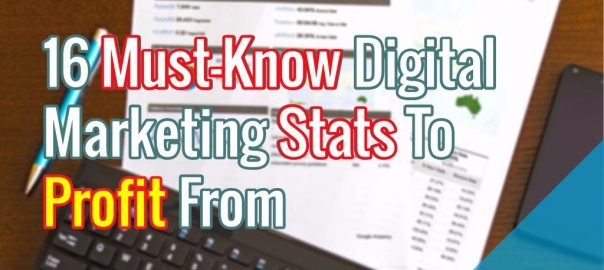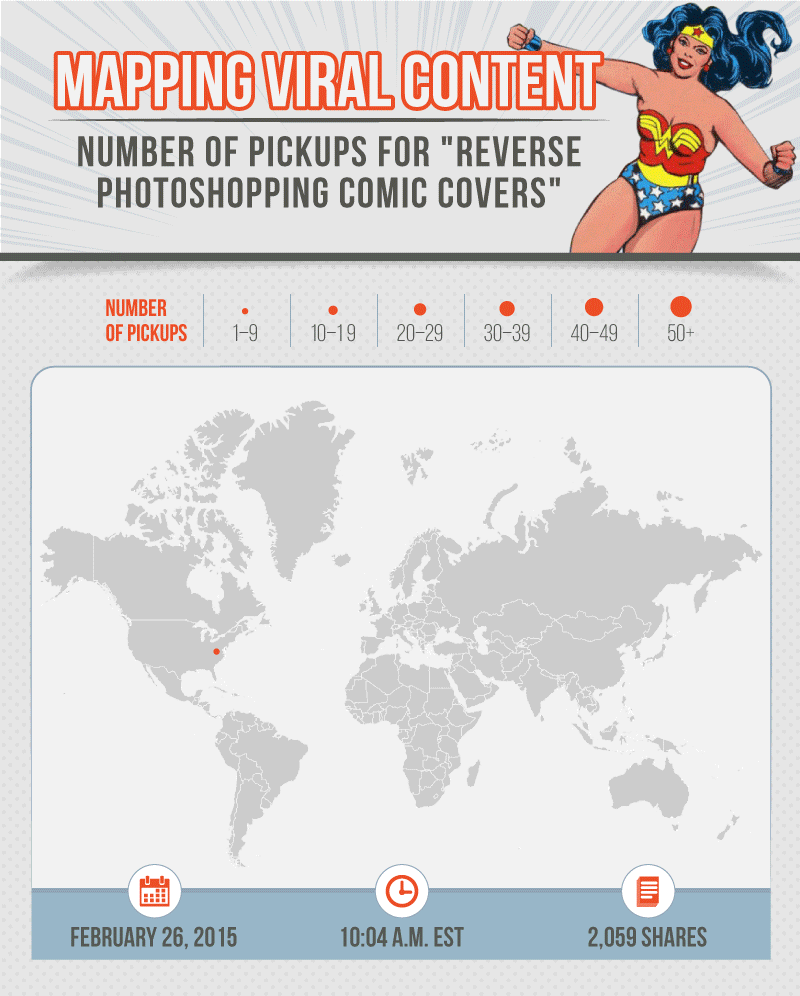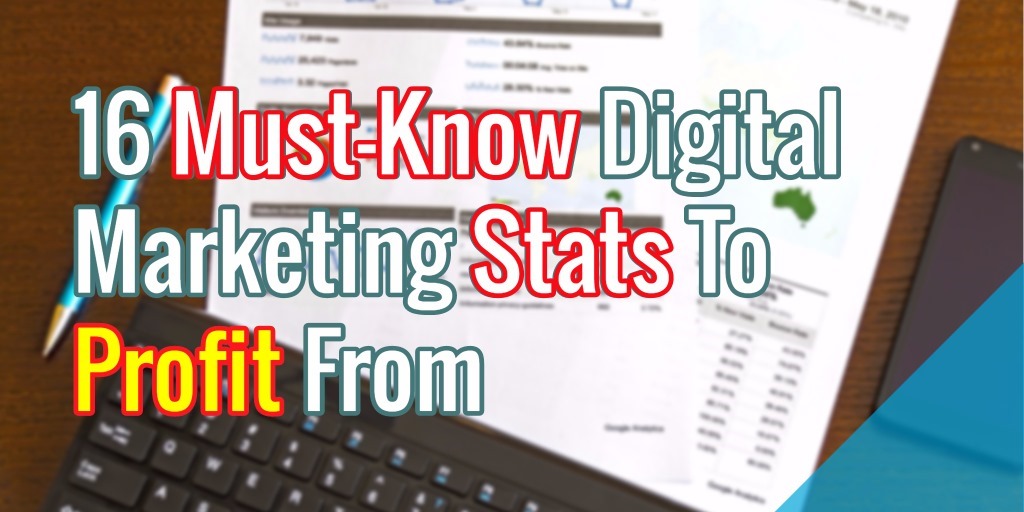
Over the last 12 months, I sent more than 300 pitches that helped secure over 60 guest posts, which covered everything from viral content to SEO best practices. The goal? To help other digital marketers get a handle on where our industry is heading within the next year.
So what are some of the biggest trends should you keep in mind when outlining your strategy for next year? My team at Fractl conducted more than 20 studies in 2016 that explored everything from different generations’ social sharing habits to viral content.
Below are 16 insights that can help your brand drive awareness and conversions in the new year along with ways your team can apply them for more effective content.
1. New and increasingly sophisticated tools are emerging that will allow us to uncover hidden aspects of data that consumers want to see.
My team spoke with seven content strategists on the latest trends and to gain insights on where the industry is heading. The overwhelming consensus? Brands can learn a thing or two from big-time publishers who are embracing the role of data in their content, particularly in how the right visualizations can help connect your content to a much larger discussion.
Pro tip: The best data could be right under your nose. Consider milling through your own internal data for your next campaign. Not only do your competitors not have access to this, but your consumers will find it highly-relatable as it likely explains some of their interactions with your brand.
2. Content marketing teams need strategists with an array of technical and creative skills, no MBA required.
After reviewing more than 3,000 job listings specific to content marketing, we learned that the most successful candidates offer a hybrid skill set, specifically one that shows experience in SEO, coding, writing, and marketing strategy.

Pro tip: Experience is valued above all else, so avoid costly MBA programs in favor of online courses through sites like Udemy and Coursera that can help you sharpen specific skills like analytics and coding.
3. Top retail giants like Amazon and Apple are devoting more money to search than any other tactic.
Another study looked at how 20 top online retailers spent their marketing dollars in the past year. Two of the biggest players – Amazon and Apple – devoted more than 85% of their budget exclusively on online search spending. The reward? The total online traffic for Amazon and Apple exceeded that of all other 18 retailers combined.

Pro tip: Do your research on keywords before cementing your search strategy: Some long-tail keywords could have a higher ROI than their one-word counterparts.
4. Nearly 52% of high-authority links will receive zero social engagements.
After analyzing three years worth of client results, we were shocked to learn that a high domain authority doesn’t always guarantee engagement.
Pro tip: An effective outreach strategy focuses on building a diverse link portfolio that targets top-tier publishers and along with those that have proven their ability to drive social shares.
5. It only takes one big media placement to generate a lasting increase in press coverage.
We took a closer look at seven brands that earned high-profile media stories and discovered that the initial feature can give way to increased media coverage over a long period. A great example is #TheDress debate, which helped Roman Originals – the retailer behind the dress – see a whopping 17,550% increase in press mentions within the following month.
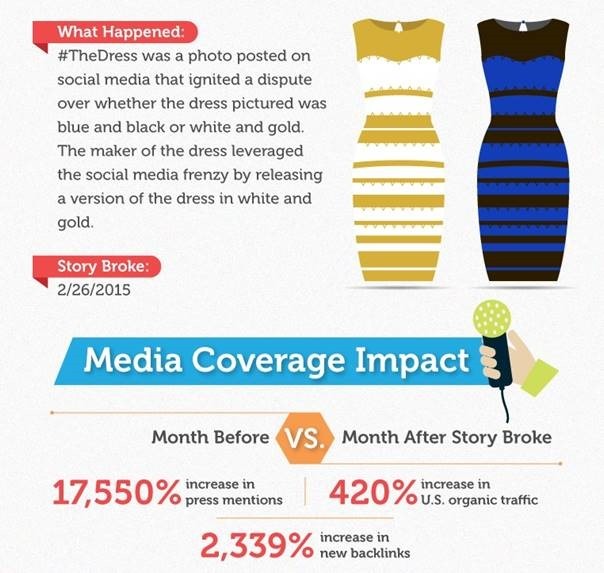
Pro tip: During outreach, secure an exclusive story on a top-tier site. This will help drive natural syndication and minimize the need for any additional outreach.
6. More than 50% of all non-like reactions on Facebook are “Love.”
After taking a closer look at the top three posts for eight news sites – CNN, Fox News, The Huffington Post, The New York Times, USA Today, The Wall Street Journal, The Washington Post, and Yahoo News – we discovered that most audiences want to see feel-good content.
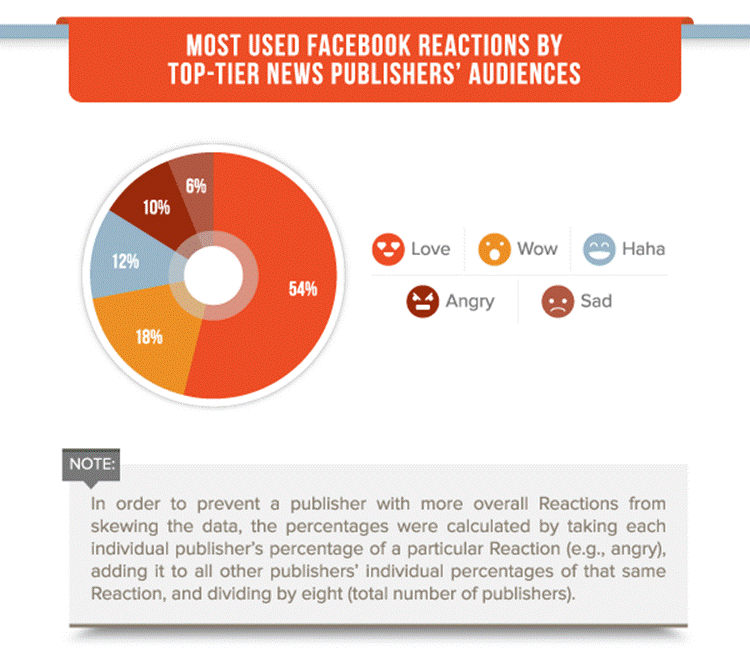
Pro tip: When pitching your content, focus on an angle that would make for a positive story. This will increase your chances in getting your content published.
7. Facebook sees the most social engagement across platforms — earning 9 out of 10 shares.
An analysis of 3 billion social shares revealed that Facebook is still king, earning 90% of all social shares.

Pro tip: Plain and simple: Make sure your content optimized for Facebook.
8. Millennial men share content the least on Facebook.
In April 2016, we surveyed 2,000 people about what they share on Facebook to get a better understanding of content that’s primed for engagement. Our results revealed that sharing habits vary significantly by age and gender, with Millennial men proving to be a group that might not be the most effective targets.
Pro tip: Repurpose your content and highlight different stats in order to reach multiple audiences.
9. Nearly 50% of Facebook users share content they believe their friends will find entertaining.
Piggybacking off the former study, we also wanted to learn more about why people share on Facebook. The strongest driver was content that was deemed interesting or entertaining.
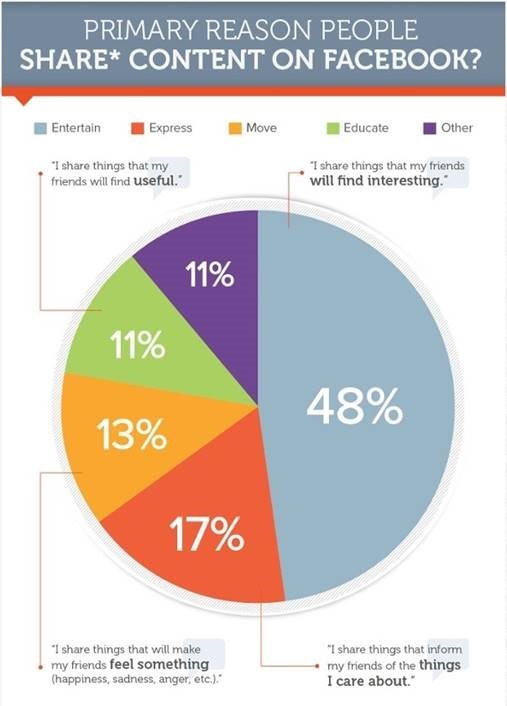
Pro tip: When producing content, ask yourself one question throughout: “Would I share this with my friends?”
10. Instead of focusing on word count, drive engagement with content that’s emotional, useful, or unique.
We pulled the top 100 BuzzFeed articles and discovered that the most shared content was not always their famous listicles. Travel content, for instance, averaged more than 900 words for every image per post.
Pro tip: Determine what vertical your content falls under and research what type of content performs best.
11. Viral content will often gain exposure across borders, so material must appeal to international audiences and universal emotions.
To track how a viral campaign can spread around the world in a matter of days, we mapped how one of our campaigns generated nearly 1,300 press mentions and more than 100,000 social shares in a little over one week.
Pro tip: Connecting your content to a universal idea (in this case, it was body image) can help drive international coverage.
12. More than 50% of high-performing content marketing campaigns include some sort of comparison or ranking.
After reviewing more than 300 of our own client campaigns, we determined that the most successful content was highly emotional, generated broad appeal, offered a comparison, or tied in a pop culture theme.
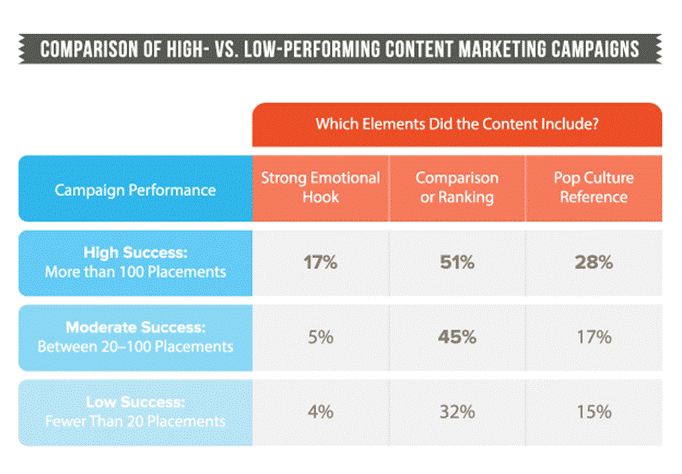
Pro tip: Make sure your content strategy includes campaigns that are data heavy.
13. While the number of media placements and social shares vary by vertical, every industry can create viral content.
An internal audit of nearly 350 client campaigns determined that the average number of shares can vary by vertical significantly. For instance, health and fitness campaigns averaged more than 60,000 shares while fashion mustered just over 1,300.
Pro tip: To optimize social traction, consider promoting content in more than one vertical.
14. Viral content should be simple, unexpected, concrete, credible, emotional. And it should tell stories.
In their book, “Made to Stick: Why Some Ideas Survive and Others Die” Chip and Dan Heath outline six components of compelling ideas. For your content strategy, this means that the most successful content should incorporate each element.
Pro tip: Additional research on viral content proves an element of surprise also goes a long way in generating attention.
15. The top 10 emotional responses to viral content are overwhelmingly positive.
After analyzing 400 responses to 100 of the top images from Reddit’s r/pics community, we were able to determine the most effective emotional combinations for viral content. A major theme? A majority of the images made viewers feel good.
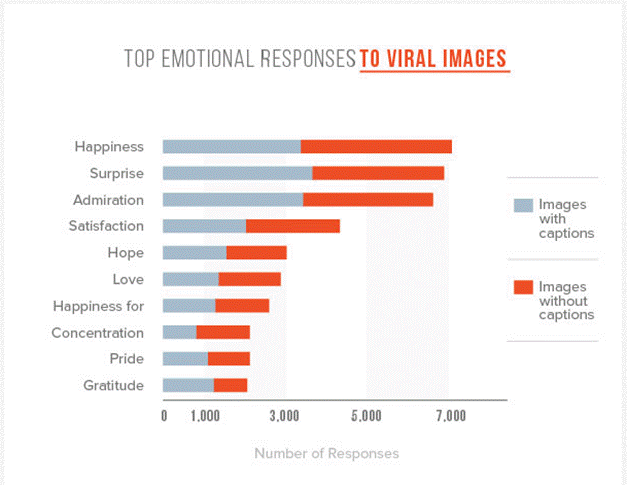
Pro tip: Again, although feel-good content is primed for social sharing, our research indicates that an element of surprise can also help magnify positive feelings and amplify social shares.
16. Influencers with the most followers aren’t necessarily the most influential.
Researchers at USC recently uncovered a social media phenomenon known as the majority illusion, which happens when certain members within a social network give the appearance that an idea, opinion, or product is more popular than it is. We discovered that there are two types of influencers who can help your brand mimic majority illusion: Niche influencers and those who have cross-vertical connections.
Pro tip: Remember that timing is also crucial. The more influencers you can get pushing your content at the same time, the better your chances for creating the majority illusion.
You can review the complete deck here. Are there any major trends that you think I missed? Please let me know in the comments below!
16 Must-Know Digital Marketing Stats To Profit From
The post 16 Must-Know Digital Marketing Stats To Profit From appeared first on Search Engine People Blog.
Search Engine People Blog(47)
